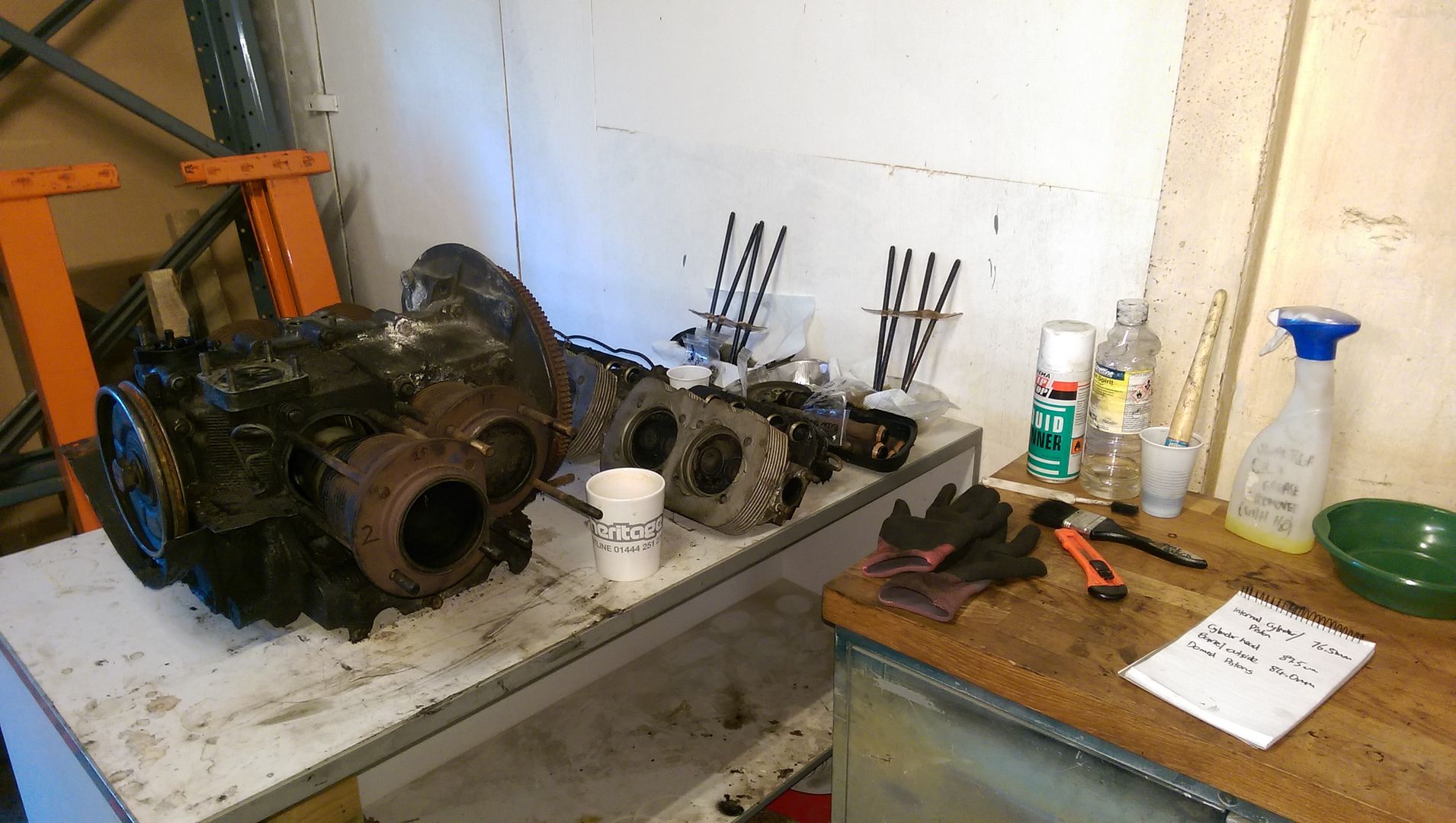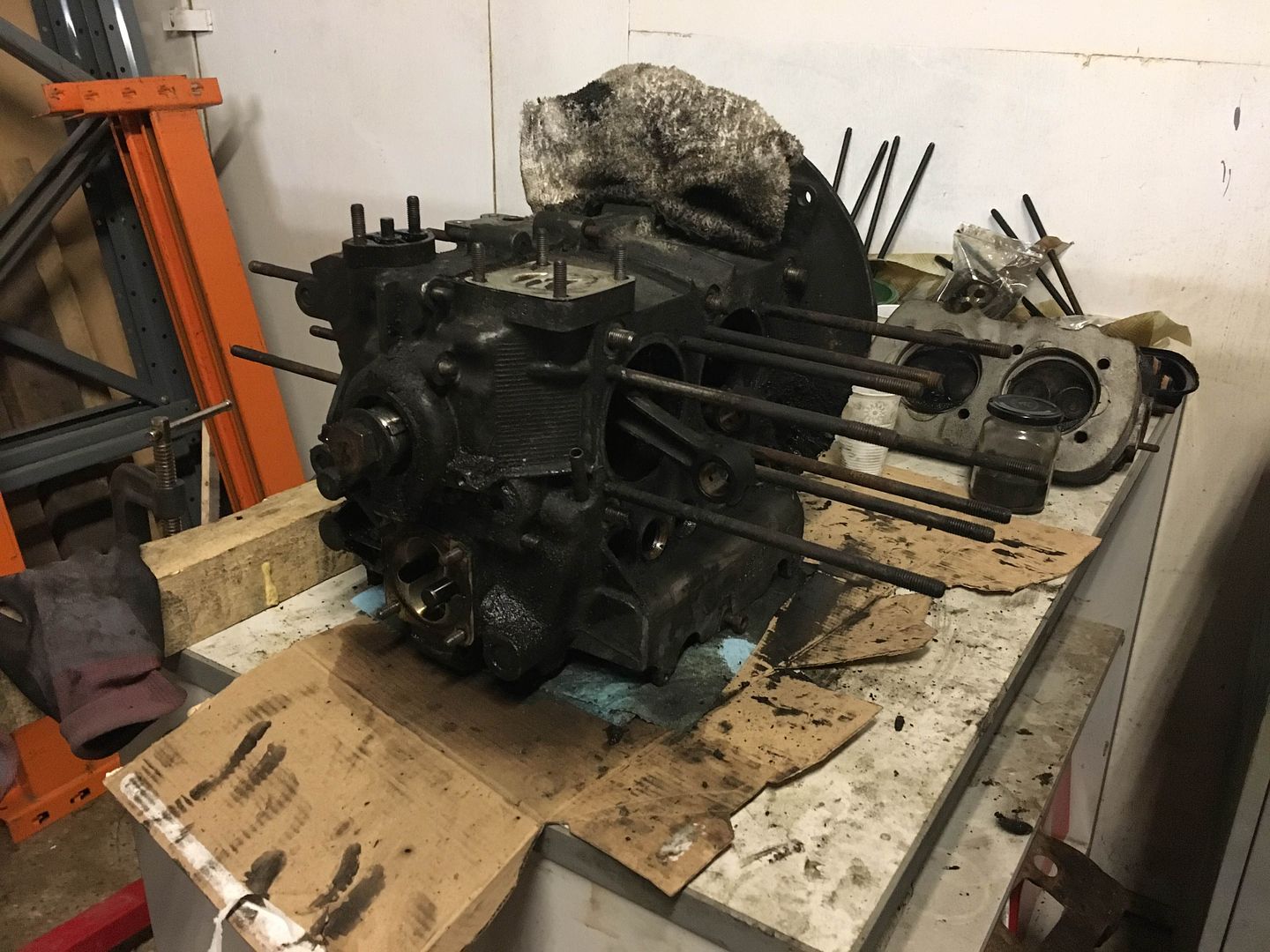Any help or guidance will most definitely be needed as part of this thread!
Some of you may have seen my threads in tech about My engine just won't idle and My oil looks like glitter. Well after 4 carburettors I've decided to give up on that engine!
I had two "spare" engines in the garage at my Mum's. The condition of them are unknown, both have had various bits borrowed from them over the years, but I know they came out of vehicles at somepoint in the mid 90's. They have sat in the garage or under a tarpaulin in the car port ever since. I have decided to try and rebuild one of these to see if I can get one going before deciding whether to splash out on a brand new VW Heritage engine.
So the two engines in question... Engine A is an AB case engine. Engine B is an AD case engine, but has been previously reconditioned by VW as the case engine number has been ground out and it has the VW recycle stamped into it. I have ran some tests on these engines and the results are...
Engine A (AB)
[*] End float measured at 0.11mm
[*] Leak down compression test results: 20%, 25%, 35%, 25%
Engine B (AD)
[*] End float measured at 0.22mm
[*] Leak down compression test results: 18%, 20%, 18%, couldn't measured as helicoil pulled out the head.
It was probably a bit unfair to run a leakdown test on two engines set for the best part of 20 years, but I couldn't think of a better way to asses them without trying to run them straight up. Based on the end float alone, I have decided to strip all tinware/ancillaries off of Engine A so that I can get to the heads and see whether it is a 1300 or 1600.
As expected it is a 1300 hundred as confirmed by the interior measurements of the cylinders and piston size. I currently have one barrel removed and I expect to remove the others this weekend, as well as removal of the pistons. In the garage, I also have a set of used 1600 barrels and pistons, as well as two pairs of 1600 cylinder heads.
Now the first bit of advice I need... would you just slap these barrels and pistons on and build the engine back up so that it can be run on a bench to see what the engine is actually like? Or would you go further and split the case etc.. I'm working on the basis that just putting these bits I have in the garage on will cost me just time, rather than thinking about doing a ring job, new valves, lapping the valves etc.. and will be good practice for building up a brand new longblock, but am I missing a trick not doing any of that while I'm down to just the case with the rods hanging out?
Current state of Engine A

More obligatory pictures will follow when I can upload some.
Any advice welcome!
Some of you may have seen my threads in tech about My engine just won't idle and My oil looks like glitter. Well after 4 carburettors I've decided to give up on that engine!
I had two "spare" engines in the garage at my Mum's. The condition of them are unknown, both have had various bits borrowed from them over the years, but I know they came out of vehicles at somepoint in the mid 90's. They have sat in the garage or under a tarpaulin in the car port ever since. I have decided to try and rebuild one of these to see if I can get one going before deciding whether to splash out on a brand new VW Heritage engine.
So the two engines in question... Engine A is an AB case engine. Engine B is an AD case engine, but has been previously reconditioned by VW as the case engine number has been ground out and it has the VW recycle stamped into it. I have ran some tests on these engines and the results are...
Engine A (AB)
[*] End float measured at 0.11mm
[*] Leak down compression test results: 20%, 25%, 35%, 25%
Engine B (AD)
[*] End float measured at 0.22mm
[*] Leak down compression test results: 18%, 20%, 18%, couldn't measured as helicoil pulled out the head.
It was probably a bit unfair to run a leakdown test on two engines set for the best part of 20 years, but I couldn't think of a better way to asses them without trying to run them straight up. Based on the end float alone, I have decided to strip all tinware/ancillaries off of Engine A so that I can get to the heads and see whether it is a 1300 or 1600.
As expected it is a 1300 hundred as confirmed by the interior measurements of the cylinders and piston size. I currently have one barrel removed and I expect to remove the others this weekend, as well as removal of the pistons. In the garage, I also have a set of used 1600 barrels and pistons, as well as two pairs of 1600 cylinder heads.
Now the first bit of advice I need... would you just slap these barrels and pistons on and build the engine back up so that it can be run on a bench to see what the engine is actually like? Or would you go further and split the case etc.. I'm working on the basis that just putting these bits I have in the garage on will cost me just time, rather than thinking about doing a ring job, new valves, lapping the valves etc.. and will be good practice for building up a brand new longblock, but am I missing a trick not doing any of that while I'm down to just the case with the rods hanging out?
Current state of Engine A

More obligatory pictures will follow when I can upload some.
Any advice welcome!




